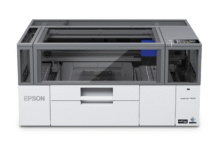
The efficiency-enhancing benefits of workflow management systems are proven to deliver many quantifiable advantages for print companies. Yet, there is no doubt that changing processes that may have been in place for many years—perhaps even since day one—can be daunting.
Resistance may spring from a desire to maintain the status quo—the ‘if it ain’t broke, don’t fix it’ school of thought. But more often than not, it stems from genuine concerns, such as how the change might impact staff morale, or if it will interrupt existing processes. Here, Jonathan Malone-McGrew examines three common myths about workflow management systems — and explains why making the switch could benefit far more than your bottom line.
Myth # 1: New workflow processes will demotivate staff
One of the most common concerns we hear from companies considering upgrading to a workflow management system is how the production team will react. A company’s greatest asset is its people, so it’s absolutely right that new technology’s impact on morale is considered. However, when the transition is handled correctly, the introduction of new technology can actually have a hugely positive effect on staff—by freeing them from tedious manual processes and giving them opportunities to do more value-added tasks.
This is supported by a report from McKinsey, which examines workers’ attitudes to automation[1]. Nearly 60% of workers surveyed estimated that they could save six or more hours a week if the repetitive aspects of their jobs were automated, with almost three-quarters (72%) saying they would use the time to do work that is more valuable for their organization. Even more, 78% would focus on the more interesting and rewarding aspects of their jobs.
Myth # 2: We can’t afford new commercial software
Cost is, understandably, a key consideration when investing in any new technology. However, as with any investment, it is essential to look beyond the purchase price and consider how much extra revenue it could generate.
The right workflow management solution will be able to deliver a rapid Return on Investment (ROI). Based on feedback from Solimar customers, we know that typical benefits include — a reduction in onboarding time from 20 minutes to 20 seconds. There is a valuable improvement in increased visibility, tracking, and reporting. And a reduction in the cost of storage through better archive processes, not to mention the benefits of better housekeeping and its effects in avoiding mistakes. These add capabilities to accept additional work types while adding differentiated value-adds.
Borns Group, a marketing, print, and mailing solutions company based in the US, has achieved an ROI several times over since installing a workflow management system in 2019. The company installed the system to better control its inkjet printers and automate processes such as adding digital inserts, migrating black and white logos to full color, and adding pages and perf marks. The workflow management system has led to quantifiable improvement in print quality and a 60% reduction in project turn-around times, winning the company US$ 400,000 of new business. In addition, the workflow system is also enabling Borns Group to save US$ 100,000 a year in reduced print production labor and business process costs.
Myth # 3: New workflow software won’t be compatible with existing systems
A common concern regarding workflow management systems—and it is not without foundation. Many of the software solutions on the market today rely on custom programming, requiring companies to employ highly-skilled programming staff to operate them, or employ third-party programmers, which can be costly and may not provide the same level of responsiveness as in-house staff. This is often a deal-breaker for companies. At the very least, it can negatively impact the solution’s long-term maintenance costs.
Before investing in new workflow software, make sure it has been designed with ease-of-use in mind. It should have a simple-to-use interface that requires no complicated coding, enabling customers to accelerate the implementation of production changes and install new versions quickly. Moreover, it should be configurable to many different environments and market types, making it a good fit for SMB to Enterprise and side-stepping the need for custom coding.
The first step to workflow optimization
The first step to improving your workflow is to understand it. For instance, Solimar Systems provides a ‘walk your workflow’ service whereby we examine your existing processes and systems and advise you on steps you can take to improve them. This is usually done in person but can also be undertaken virtually through video meetings. This process will help you identify where the money is being left on the shop floor and arm you with the knowledge to make your workflow better, faster, and more competitive.
[1] https://www.smartsheet.com/content-center/product-news/automation/workers-waste-quarter-work-week-manual-repetitive-tasks
Jonathan Malone-McGrew is the senior director of Engagement at Solimar Systems, a US-based business that enables global organizations to onboard, make ready, enhance, manage and deliver print and digital communications. He can be reached at jonathan.mcgrew@solimarsystems.com.















